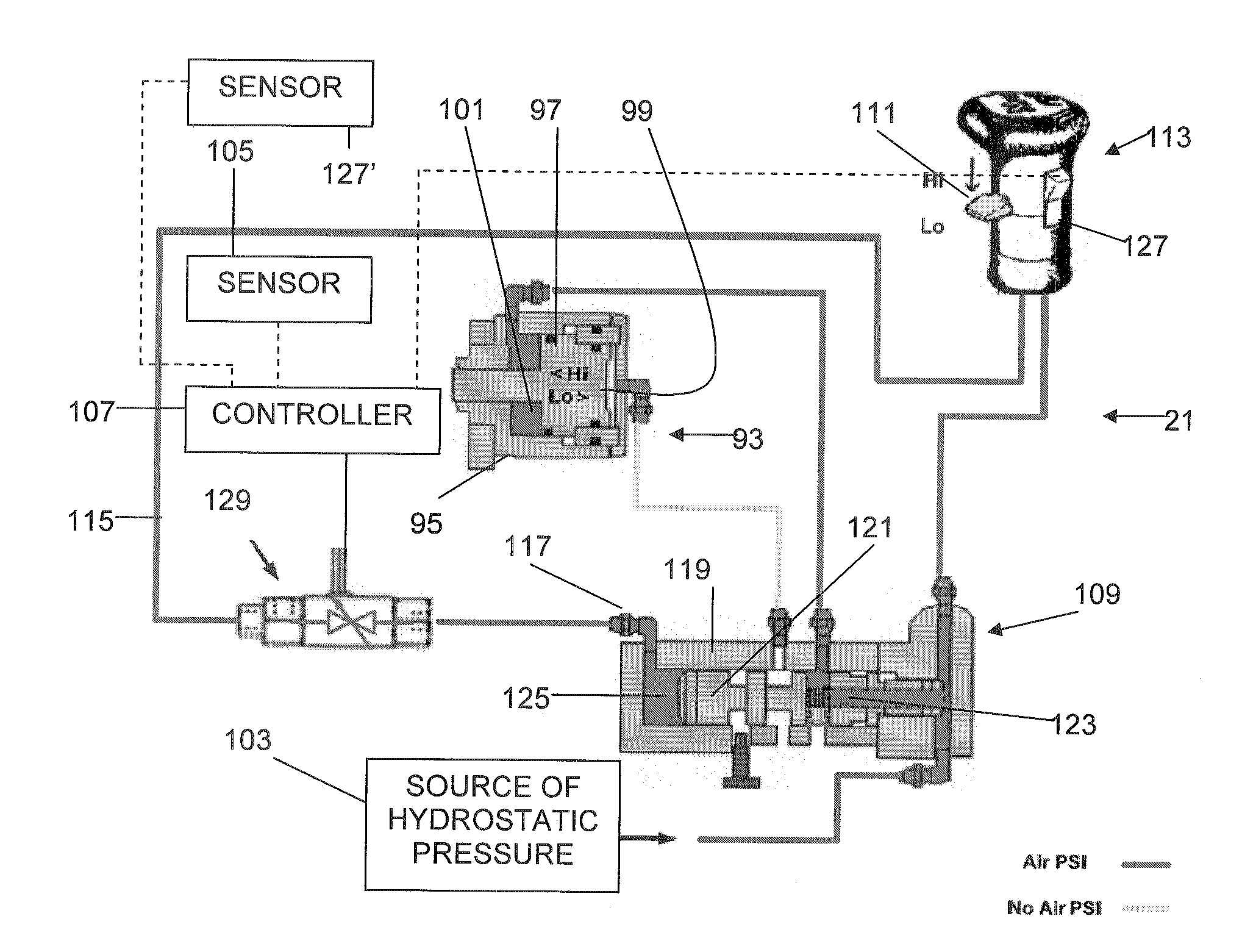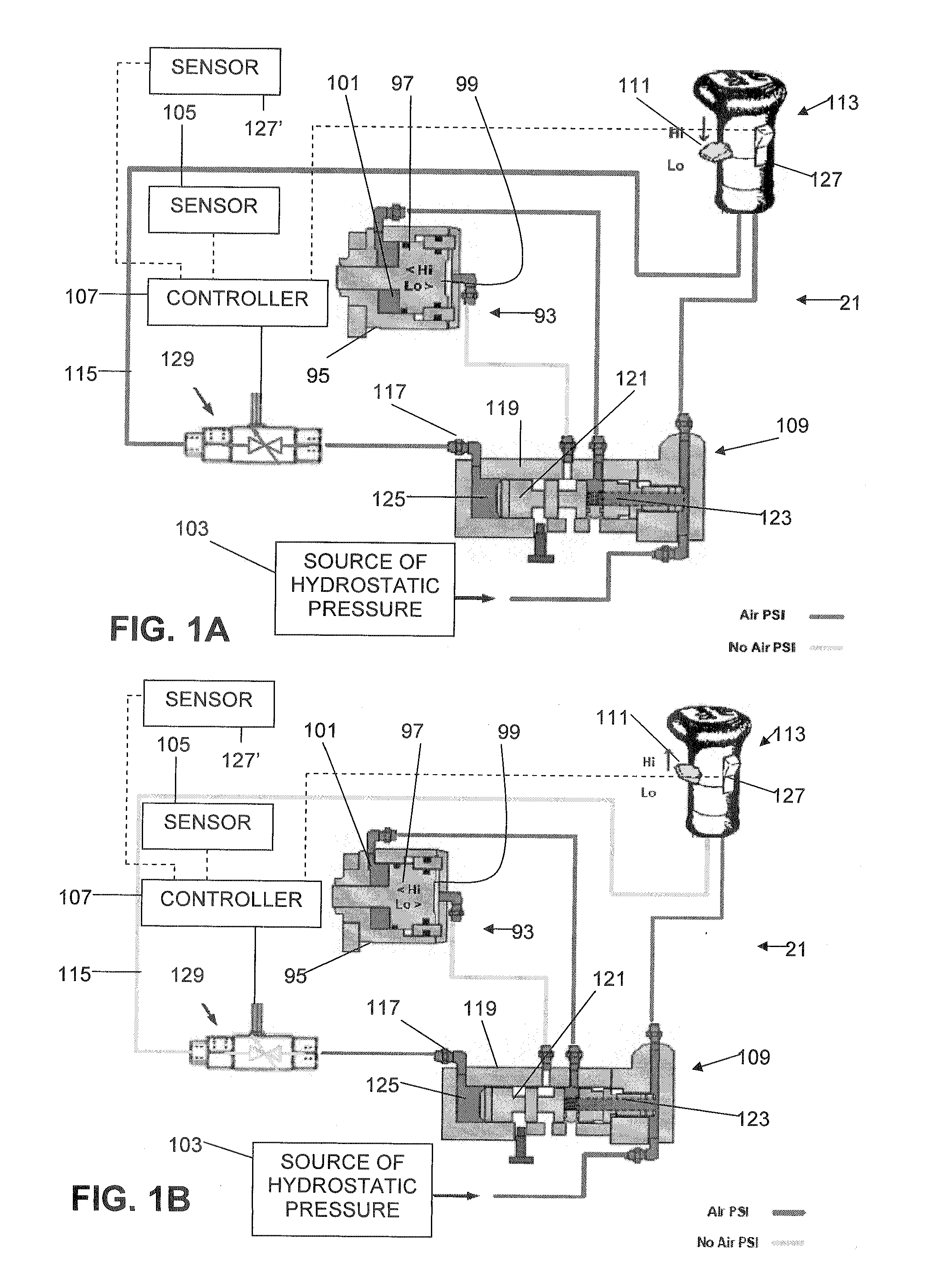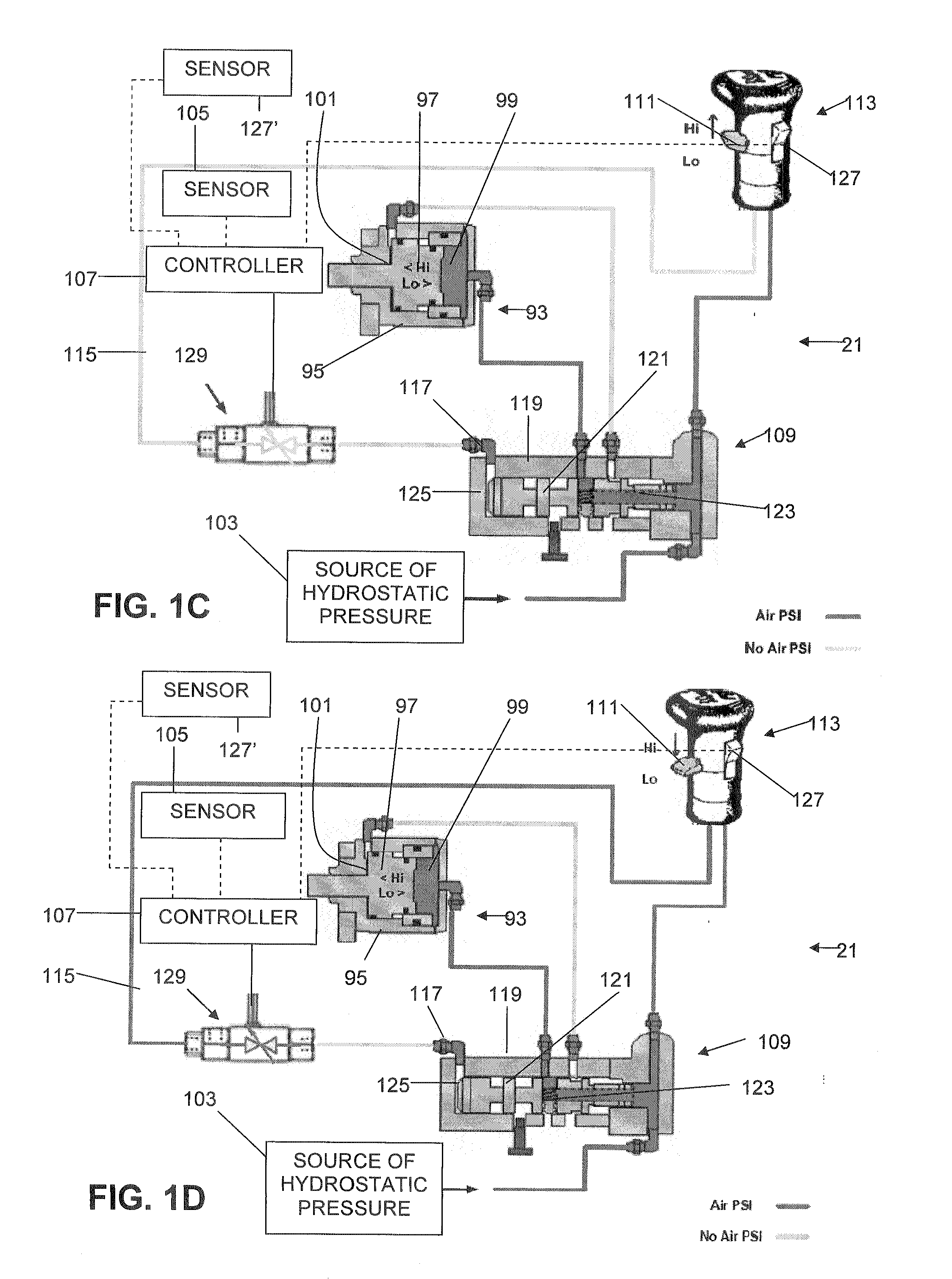Arrangement for inhibiting range shifting in a transmission
- Summary
- Abstract
- Description
- Claims
- Application Information
AI Technical Summary
Benefits of technology
Problems solved by technology
Method used
Image
Examples
Embodiment Construction
FIGS. 1A-1D show an arrangement 21 for inhibiting axial movement of a range clutch 87 in a transmission 25 of the general type shown in FIGS. 2A-2C. The illustrative transmission 25 comprises a main shaft 27 and an output shaft 29. The range clutch 87, shown in a neutral position in FIG. 2A, is movable on the output shaft 29 between a high range position (FIG. 2B) and a low range position (FIG. 2C) to modify a main shaft 27 rotational speed to at least one different output shaft 29 rotational speed. It will be appreciated that the transmission 25 can form part of a vehicle such as a heavy truck.
The transmission 25 comprises a main portion 25a and an auxiliary portion 25b. The main portion 25a comprises a plurality of selectable gears comprising a forward gear, which may comprise a plurality of forward gears 31, 33, 35, 37, and 39, and a reverse gear 41, which may comprise a plurality of reverse gears (only one reverse gear shown), for providing different speed ratios between an inpu...
PUM
 Login to View More
Login to View More Abstract
Description
Claims
Application Information
 Login to View More
Login to View More - R&D
- Intellectual Property
- Life Sciences
- Materials
- Tech Scout
- Unparalleled Data Quality
- Higher Quality Content
- 60% Fewer Hallucinations
Browse by: Latest US Patents, China's latest patents, Technical Efficacy Thesaurus, Application Domain, Technology Topic, Popular Technical Reports.
© 2025 PatSnap. All rights reserved.Legal|Privacy policy|Modern Slavery Act Transparency Statement|Sitemap|About US| Contact US: help@patsnap.com



